Introduction
Project planning and scheduling are essential components of successful project management. These processes help ensure that tasks are completed on time, resources are efficiently allocated, and risks are minimized. Effective project planning and scheduling not only streamline workflows but also enhance the overall quality and success rate of projects.
We will delve into the best practices for project planning and scheduling, providing you with actionable insights to optimize your project management approach. We will also compare product-based planning with traditional planning methodologies, helping you understand the strengths and weaknesses of each. Note that understanding of the project management glossary of terms is very important. By the end of this article, you will have a comprehensive understanding of how to implement effective planning strategies that can lead to successful project outcomes.
Table of Contents
What is Project Planning?
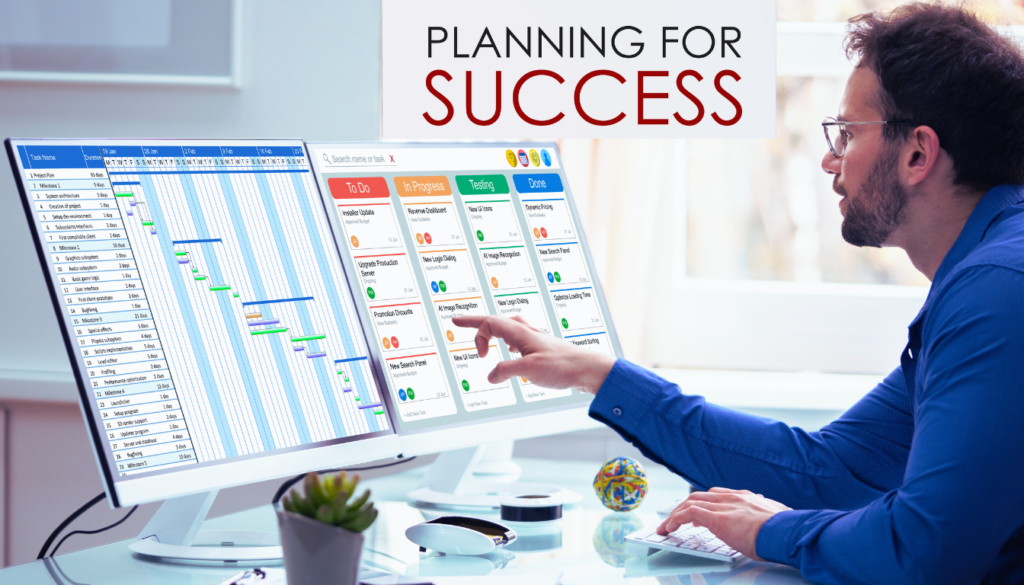
Project planning is the process of defining the scope, objectives, and steps necessary to complete a project successfully. It involves outlining the tasks, resources, and timeline required to achieve the project goals. Effective project planning and scheduling ensure that all aspects of the project are considered and organized, reducing the risk of delays and cost overruns.
By focusing on thorough project planning and scheduling, project managers can ensure that all team members are aligned, resources are allocated efficiently, and potential risks are mitigated. Project planning typically includes the following key components:
Defining Project Scope
Clearly outlining what the project will deliver and what it won’t.
Setting Objectives and Goals
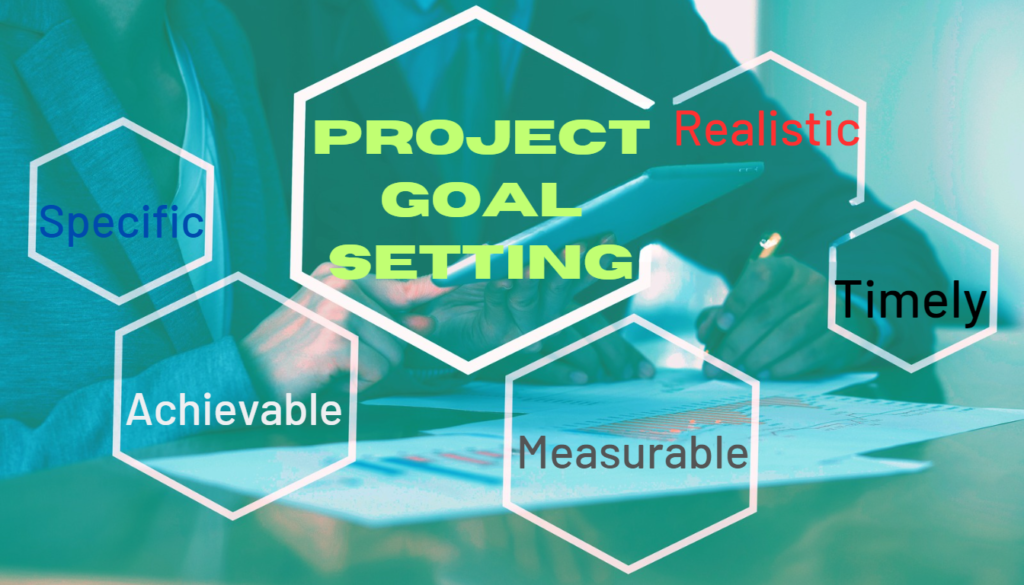
Establishing what the project aims to achieve.
Identifying Stakeholders
Recognizing all parties involved or affected by the project.
Developing a Project Plan
Creating a detailed roadmap of tasks, resources, and timelines.
Project Plan-Schedule Checklist
For additional information, you can Download a free Project Plan-Schedule Checklist here which you can use to ensure that your plan/schedule is complete and realistic.
Product-Based Planning vs Traditional Planning

This comparison highlights the key differences between product-based planning and traditional planning methodologies, helping project managers choose the approach that best fits their project’s needs.
| Aspect | Product-Based Planning | Traditional Planning |
|---|---|---|
| Focus | Focuses on delivering a specific product or feature. | Focuses on completing tasks and activities within the project. |
| Scope Definition | Defines the scope based on the product requirements and features. | Defines the scope based on project phases and deliverables. |
| Planning Approach | Iterative and flexible, allowing for changes based on product development stages. | Linear and sequential, with a fixed plan from start to finish. |
| Risk Management | Continuous risk assessment throughout the product lifecycle. | Risk assessment typically conducted at the beginning and reviewed periodically. |
| Stakeholder Involvement | High level of stakeholder involvement throughout the product development process. | Stakeholder involvement primarily at key milestones and reviews. |
| Resource Allocation | Resources are allocated based on product development needs and stages. | Resources are allocated based on project phases and timelines. |
| Timeline | Flexible timelines that adapt to product development progress. | Fixed timelines with set milestones and deadlines. |
| Outcome Measurement | Success measured by the quality and functionality of the final product. | Success measured by the completion of tasks and adherence to the project plan. |
| Change Management | Changes are expected and managed through iterative development cycles. | Changes are controlled through formal change management processes. |
| Documentation | Emphasis on maintaining up-to-date product documentation. | Emphasis on comprehensive project documentation from the outset. |
What is Project Scheduling?

Project scheduling is the process of organizing tasks, activities, and milestones in a timeline to ensure that a project is completed on time. It involves assigning start and end dates to each task, allocating resources, and setting deadlines. Effective project scheduling is crucial for successful project planning and scheduling, as it helps manage time, resources, and expectations. By focusing on detailed project scheduling, project managers can ensure that all tasks are completed in the correct order, resources are used efficiently, and the project stays on track.
Main components of project scheduling include:
Task Breakdown
Dividing the project into smaller, manageable tasks.
Estimating Time and Resources
Determining how long each task will take and what resources are needed.
Creating a Timeline
Establishing a sequence of tasks and setting deadlines.
Assigning Tasks
Allocating tasks to team members based on their skills and availability.
Steps in Project Planning
Following these steps in project planning, project managers can ensure that all aspects of the project are well-organized and that the project progresses smoothly.
| Step | Description |
|---|---|
| Define the Project Scope | Clearly outline what the project will deliver and its boundaries. |
| Identify Stakeholders | Recognize all individuals and groups affected by the project. |
| Set Objectives and Goals | Establish specific, measurable, achievable, relevant, and time-bound (SMART) goals. |
| Develop a Project Plan | Create a detailed roadmap that includes tasks, resources, timelines, and milestones. |
| Allocate Resources | Determine the resources needed, including personnel, equipment, and materials. |
| Create a Risk Management Plan | Identify potential risks and develop strategies to mitigate them. |
| Establish Communication Plan | Define how information will be shared among stakeholders. |
Steps in Project Scheduling
By following these steps in project scheduling, project managers can ensure that tasks are organized efficiently, resources are used effectively, and the project stays on track.
| Step | Description |
|---|---|
| Define Tasks and Activities | Break down the project into smaller, manageable tasks and activities. |
| Estimate Duration | Determine how long each task will take to complete. |
| Determine Dependencies | Identify tasks that depend on the completion of others. |
| Assign Resources | Allocate the necessary resources, including personnel, equipment, and materials. |
| Create a Timeline | Develop a timeline that includes start and end dates for each task. |
| Set Milestones | Establish key milestones to track progress and ensure the project stays on schedule. |
| Review and Adjust | Continuously review the schedule and make adjustments as needed. |
Tools for Project Planning and Scheduling
Effective project planning and scheduling require the right tools to organize tasks, allocate resources, and track progress. Here are some essential tools for project planning and scheduling:
Gantt Charts
Gantt charts provide a visual timeline of the project, showing the start and end dates of tasks and their dependencies. They help in tracking progress and ensuring that the project stays on schedule.
Project Management Software
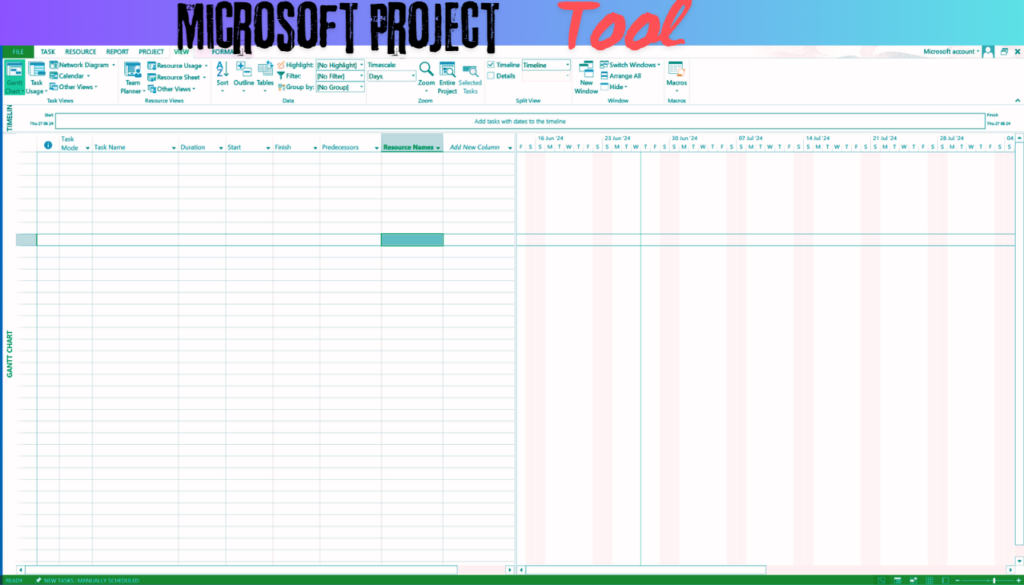
Tools like Microsoft Project, Asana, and Trello offer comprehensive project management features, including task assignment, resource allocation, and progress tracking. These tools provide a centralized platform for managing all aspects of the project.
Resource Allocation Tools
Tools such as Resource Guru and Float help in efficiently allocating resources to tasks. They ensure that resources are used optimally and prevent over-allocation.
Risk Management Tools
Software like Risk Register and RiskyProject helps identify, assess, and mitigate risks. These tools provide a structured approach to managing potential project risks.
Communication Tools
Platforms like Slack and Microsoft Teams facilitate effective communication among team members. They provide channels for discussion, file sharing, and real-time updates.
Work Breakdown Structure (WBS)
A Work Breakdown Structure (WBS) is a hierarchical decomposition of the total scope of work to be carried out by the project team. It breaks down the project into smaller, more manageable components, making it easier to plan, execute, and monitor.
Main Components:
- Levels – The WBS is structured in levels, with the top level representing the overall project and subsequent levels breaking down the work into finer details.
- Work Packages – The lowest level of the WBS contains work packages, which are the smallest units of work that can be assigned and managed.
- Tasks – Each work package is further divided into tasks, which are specific activities that need to be completed.
WBS Benefits:
- Clarity and Focus – Provides a clear picture of the project scope and objectives.
- Resource Allocation – Helps in identifying the resources needed for each task.
- Risk Management – Facilitates the identification and management of potential risks.
- Progress Tracking – Enables easy tracking of project progress by monitoring the completion of work packages and tasks.
Product Breakdown Structure (PBS)
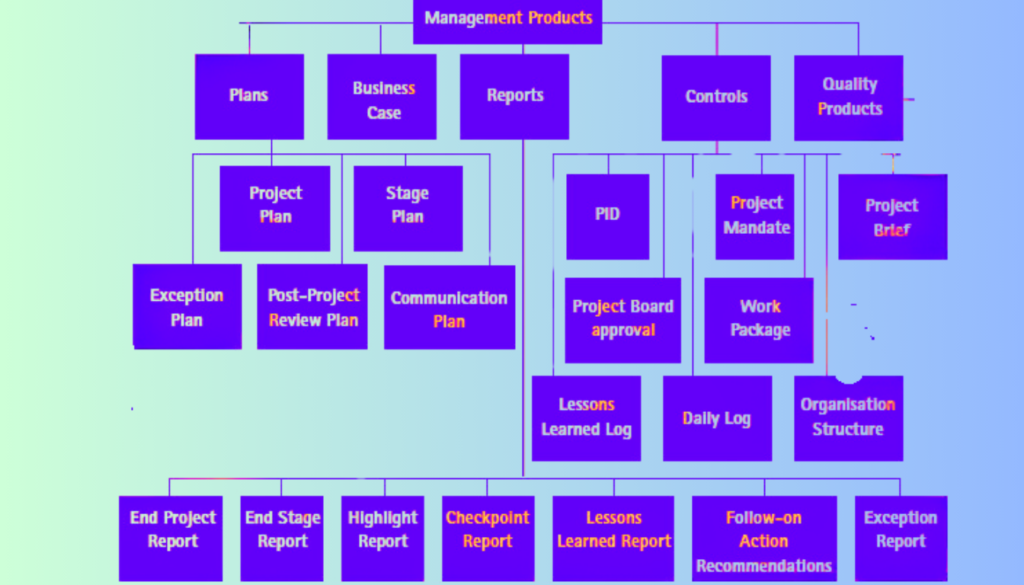
A Product Breakdown Structure (PBS) is a hierarchical decomposition of the products or deliverables that the project will produce. It focuses on the physical or functional components of the project outcome.
Key Elements:
- Levels – Similar to WBS, PBS is structured in levels, with the top level representing the final product and subsequent levels breaking it down into its constituent parts.
- Product Components – Each level in the PBS represents a product component, which can be a physical item, a software module, or any other deliverable.
- Sub-components – Each product component is further divided into sub-components, detailing the specific elements that make up the final product.
PBS Benefits:
- Clear Deliverables – Provides a clear understanding of what the project will deliver.
- Quality Control – Helps in setting quality standards for each component.
- Cost Estimation – Facilitates accurate cost estimation for each component.
- Stakeholder Communication – Improves communication with stakeholders by clearly defining the project deliverables.
Comparison of WBS and PBS
Focus
WBS focuses on the tasks and activities required to complete the project, while PBS focuses on the deliverables or products that the project will produce.
Structure
Both are hierarchical, but WBS is task-oriented, and PBS is product-oriented.
Usage
WBS is used for planning and managing project work, whereas PBS is used for defining project deliverables and ensuring quality control.
Common Challenges and How to Overcome Them
Addressing these common challenges proactively in project planning and scheduling, project managers can enhance project efficiency and increase the likelihood of successful project completion.
| Challenge | Description | Solution |
|---|---|---|
| Unclear Objectives and Scope | Vague project objectives and scope can lead to misunderstandings and scope creep. | Clearly define the project scope and objectives at the beginning. Use a detailed project scope statement. |
| Resource Constraints | Limited resources can delay tasks and affect project quality. | Use resource allocation tools to efficiently distribute resources. Prioritize tasks based on importance. |
| Poor Communication | Lack of effective communication can result in misunderstandings and missed deadlines. | Establish a clear communication plan and use collaboration tools like Slack or Microsoft Teams. |
| Inaccurate Time Estimates | Underestimating the time required for tasks can lead to project delays. | Use historical data and expert judgment to make accurate time estimates. Regularly review and adjust the schedule. |
| Risk Management | Unforeseen risks can disrupt the project and cause delays. | Develop a risk management plan that identifies potential risks and outlines mitigation strategies. |
| Lack of Stakeholder Engagement | Disengaged stakeholders can lead to a lack of support and project delays. | Engage stakeholders early and maintain regular communication. Use stakeholder analysis to understand their needs. |
Best Practices for Effective Project Planning

Effective project planning and scheduling are crucial for the success of any project. Here are some best practices to ensure your project is well-planned and on track:
Define Clear Objectives
Description – Establish clear and achievable project objectives to guide the project team.
Develop a Detailed Project Plan
Description – Create a comprehensive project plan that outlines tasks, timelines, and resources.
Identify and Manage Risks
Description – Identify potential risks early and develop mitigation strategies to manage them.
Allocate Resources Efficiently
Description – Ensure that resources are allocated based on task priority and availability.
Establish a Communication Plan
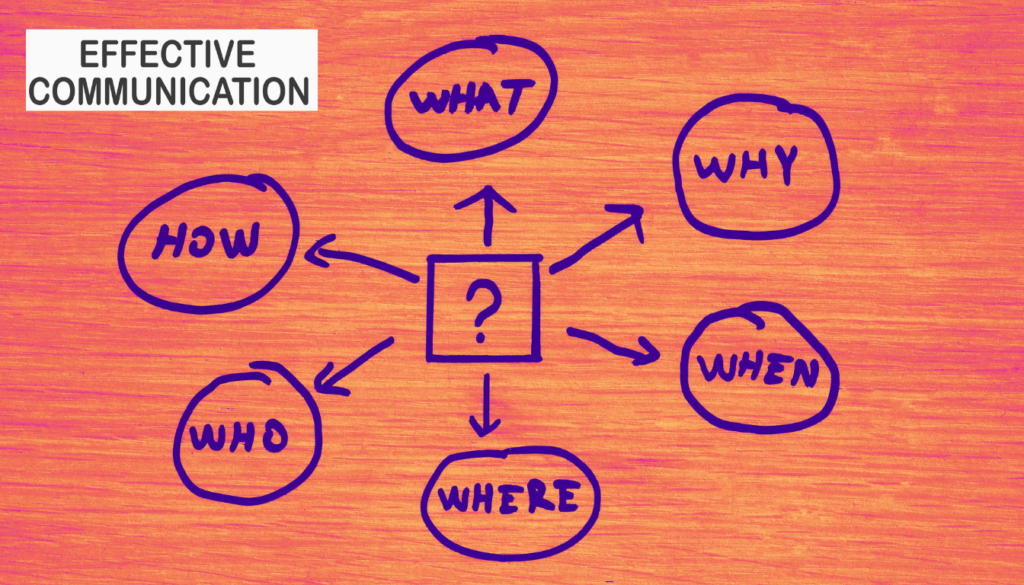
Description – Develop a communication plan to ensure effective information flow among stakeholders.
Set Realistic Timelines
Description – Create realistic timelines for task completion, considering potential delays and contingencies.
Monitor and Adjust
Description – Regularly monitor project progress and make necessary adjustments to stay on track.
Engage Stakeholders
Description – Actively engage stakeholders throughout the project to ensure their needs and expectations are met.
Conclusion and Final Thoughts
Effective project planning and scheduling are critical components of successful project management. By understanding the differences between product-based planning and traditional planning methodologies, project managers can select the approach that best suits their project’s unique needs.
Implementing best practices such as defining clear objectives, developing detailed plans, managing risks, and engaging stakeholders can significantly enhance project outcomes. Whether you choose a product-based or traditional planning methodology, the key is to remain flexible, communicate effectively, and continuously monitor progress to ensure project success.
In conclusion, mastering project planning and scheduling can lead to more efficient workflows, better resource management, and ultimately, successful project completion. By adopting these strategies, project managers can navigate challenges more effectively and deliver high-quality results that meet or exceed stakeholder expectations.
FAQ
What is project planning and scheduling?
Project planning involves defining the project scope, objectives, and steps required to complete the project. Scheduling refers to allocating specific timeframes to these tasks to ensure timely project completion.
Why is project planning and scheduling important?
Effective planning and scheduling help in organizing tasks, managing resources efficiently, minimizing risks, and ensuring that the project is completed on time and within budget.
What are the key components of a project plan?
A project plan typically includes the project scope, objectives, deliverables, timelines, resource allocation, risk management strategies, and stakeholder communication plans.
How do you create a project schedule?
To create a project schedule, list all the tasks required to complete the project, estimate the time needed for each task, allocate resources, and set deadlines. Tools like Gantt charts and project management software can help in visualizing the schedule.
What is the difference between product-based planning and traditional planning?
Product-based planning focuses on delivering a specific product or feature with an iterative and flexible approach, while traditional planning is linear and sequential, focusing on completing tasks and activities within the project.
How can project management software aid in planning and scheduling?
Project management software provides tools for task assignment, timeline creation, resource management, and progress tracking, making it easier to plan, schedule, and monitor project activities.
What are common challenges in project planning and scheduling?
Common challenges include scope changes, resource constraints, unrealistic timelines, poor communication, and inadequate risk management. Effective planning and regular monitoring can help mitigate these issues.

